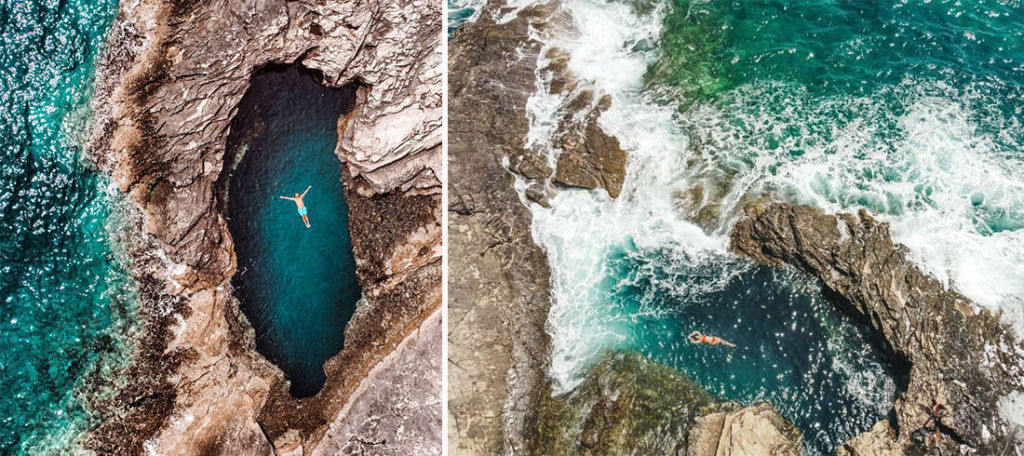09.05.2023.
Sea caves in Croatia offer, mildly put, a unique experience. A blend of awe-inspiring beauty and geological formations, they are nestled along the stunning Adriatic coastline. Be sure to explore the ethereal ambience that these wonders of nature can provide.
The most unique features of Croatia as a country are its stunning network of sea caves, which offer a glimpse into the rare and uncommon of the region.
Some of these sea caves are quite known to the world, primarily thanks to their long history (or social networks).
Croatia's sea caves are natural formations carved out of the coastline over millions of years. They are known for their stunning geological formations and unique marine life. While the sea caves are a popular tourist attraction, they are also an important and protected ecological and geological resource.
The most striking feature of Croatia's sea caves is their sheer beauty. The caves are home to crystal-clear waters with breath-taking shades of blue and green. Many caves are also home to unique geological formations, such as stalactites and stalagmites, created by the slow drip of mineral-rich water.
Many of the caves are also only accessible by boat, so booking a tour or excursion is a good idea. If sailing, all you have to do is come close enough, put your paddle board into the water or swim the short distance. So, there's one more benefit of learning to sail, among others.
And so, here's everything you need to know before you go.
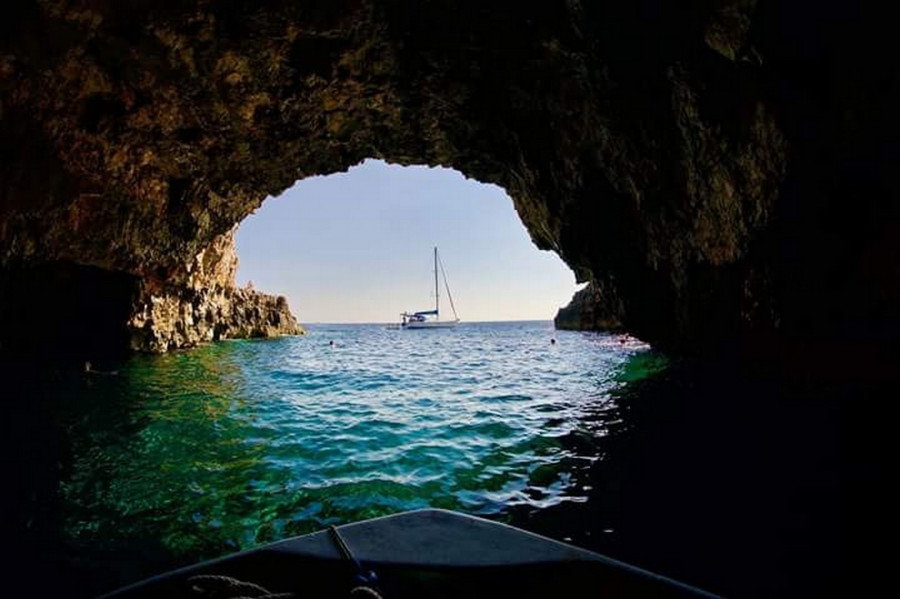
The geology and geography - how are sea caves formed
But first, a couple of facts. Sea caves in Croatia are formed by a combination of geological and geographical factors. The coast of Croatia is known for its karst landscape, characterized by porous limestone that allows water to flow through it. Over millions of years, the sea has eroded the coast, creating intricate hollowed-out passageways and caverns.
Caves in Croatia come in many different shapes and sizes. Some are small and intimate, while others are vast and cathedral-like. Some caves are only accessible by water, while others are also accessible by land. Croatia's sea caves are not just beautiful; they are also important because of the geological and ecological factors that have shaped them over aeons.
Each of Croatia's sea caves has unique features, from the colour of the water to the geological formations that adorn its walls. Some caves are home to rare and exotic marine life, while others are known for their stunning displays of colour and light.
The diverse marine life that inhabits the caves is a testament to the health of the surrounding ecosystem. At the same time, the unique geological formations provide a window into the region's natural history.
Most popular and impressive sea caves in Croatia
Visiting sea caves is an incredible experience. They are a must-visit destination for anyone interested in Croatian Adriatic diversity, especially those passionate about protecting and exploring the natural world and its inhabitants.
Blue Grotto (Blue Cave) - Modra Špilja, Biševo
Located on the island of Biševo, the Blue Grotto (Modra Špilja in Croatian) is one of Croatia's most famous and stunning sea caves. Its unique blue light is created by the sun's reflection on the white sandy bottom of the cave.
As the sun moves across the sky, the light changes in intensity and hue, creating an ever-changing landscape of colours and shades.
The entrance to the Blue Cave is a narrow opening in the rocky cliff face, leading into a large chamber over 35 meters long and up to 15 meters high. The cave is only accessible by boat. Visitors can enter it and explore its stunning beauty through guided tours or private yachts.
Interestingly enough, the entrance to the cave was first under sea level. It was additionally man-made so that small boats could enter. Luckily for all of us, we can now enjoy this natural wonder's true beauty.
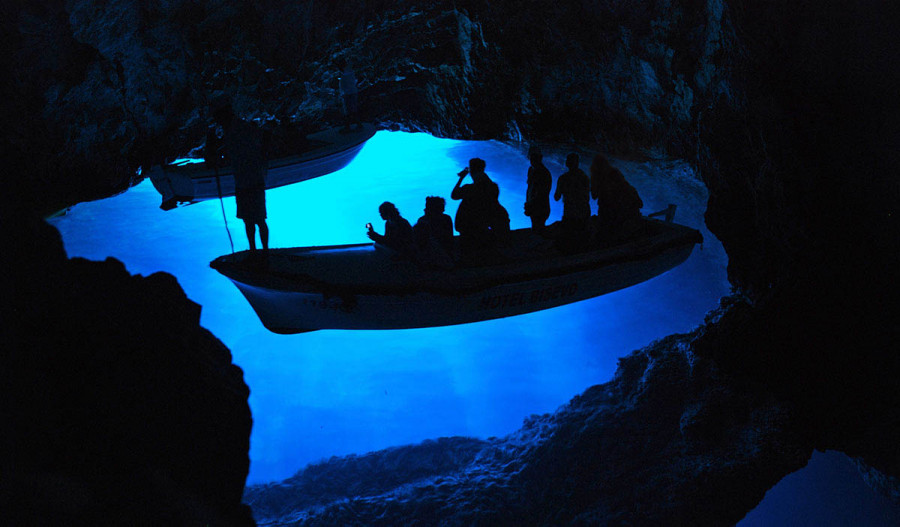
Monk Seal Cave - Medvidina Špilja, Biševo
The Monk Seal Cave (Medvidina Špilja) is another magnificent sea cave on Biševo island. It's also known for its stunning natural beauty and clear waters. The entrance to the cave is a narrow opening in the cliff face, which leads into a large chamber over 160 meters long and up to 60 meters high, making this cave the longest in the Adriatic. The cave walls are covered in unique geological formations, including stalactites and stalagmites.
Monk Seal Cave is named after the Mediterranean monk seal, which used to call this cave home. The Mediterranean monk seal is a rare and endangered species, with only around 700 individuals left. They are known for their distinctively long whiskers and playful nature. Sadly, they haven't been sighted in the area for years and are considered extinct in the Croatian part of the Adriatic.
Green Cave - Zelena Špilja, Ravnik (Vis)
The Green Cave (Zelena Špilja) is another stunning sea cave located on the island of Ravnik outside the coast of Island Vis.
Green Cave has not one but two entrances, two openings in the rocky cliff face. They lead into a large chamber over 20 meters long and up to 10 meters high. The bottom of the cave is covered in bright green algae, which reflects the sunlight and creates a shimmering green light that illuminates the entire chamber.
One of the most unusual features of this cave is the fact that there is a small opening at the top of the cave, allowing the light to come inside as a spotlight. It illuminates the water in the cave, making it look like the light is coming from the sea bottom. The effect is truly mesmerizing.
In addition to its unique green light, the Green Cave's stunning geological formations and clear waters create a magical atmosphere that is sure to take your breath away.
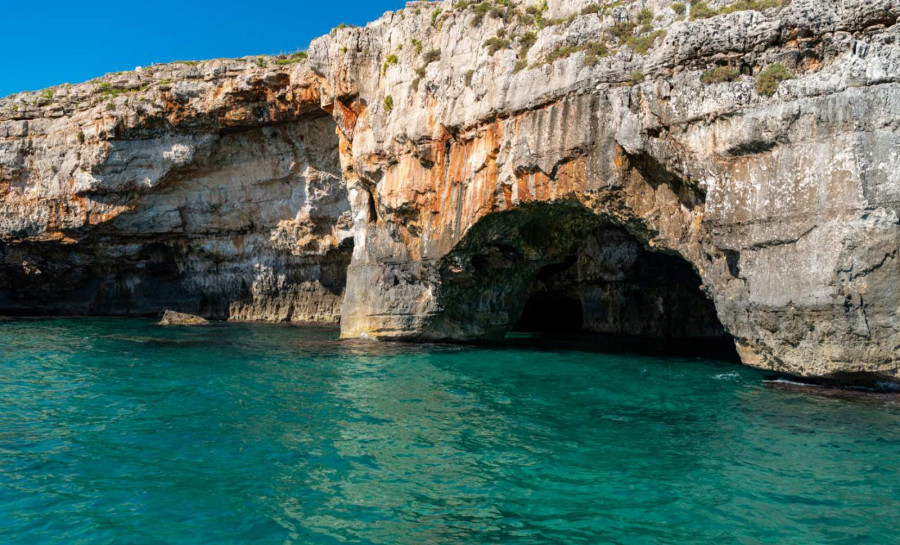
Odysseus Cave (Odisejeva špilja) - Mljet
The Odysseus Cave is an impressive sea cave on the Mljet island in Croatia. It's named after the legendary Greek hero, Odysseus, who is said to have sought refuge in the cave during his journey home from the Trojan War. The legend says Odysseus was taken under the seven-year-long spell by the nymph Calypso there.
The uniqueness of this cave is that it has an entrance from the seaside and the land. Locals call it the Pit (Jama) as it appears as a large pit over 20 meters long large chamber from the land side.
Visitors can access the Odysseus Cave by foot or boat. The walk to the cave is around 30 minutes and is a pleasant hike through the lush forests of Mljet Island. Alternatively, you can visit the cave from the seaside, allowing you to see the cave from a different perspective.

Golubinka Cave (Špilja Golubinka)
Dugi Otok The Golubinka Cave is a spectacular sea cave located on the west coast of Dugi Otok. The cave is known as the island's hidden gem, even though it is often visited by tourists and sailors alike. This is unsurprising, as Golubinka is known for its natural beauty.
The entrance to the Golubinka Cave is a narrow opening leading into a large natural hall over 50 meters long. The cave's walls are covered in unique geological formations. As the sunlight enters the cave, it reflects off the walls. It creates a shimmering blue light that illuminates the entire chamber, creating a magical and unforgettable experience.
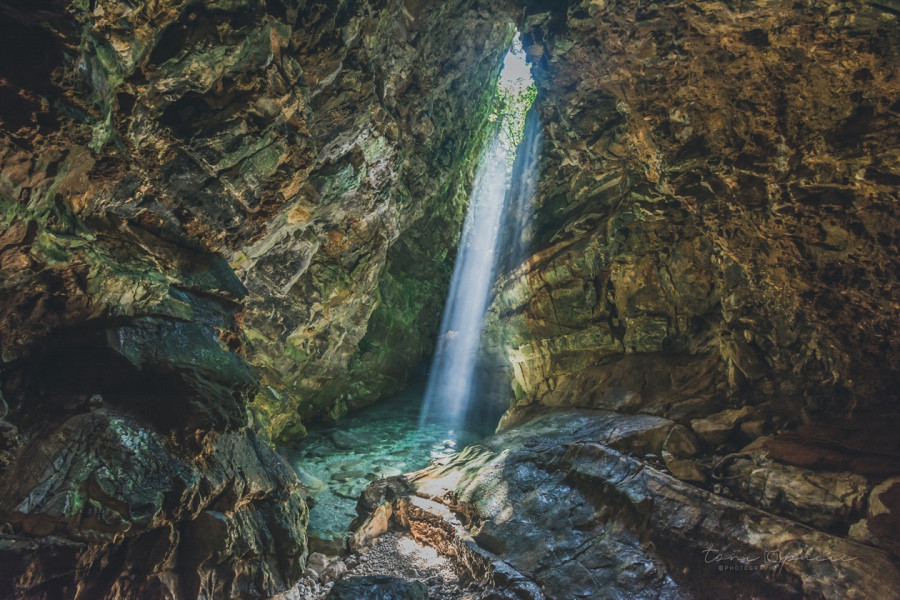
Dragon's Eye (Zmajevo oko) - Dugi otok
Dugi Otok is a true wonder of nature. It contains some of the most beautiful beaches, picturesque villages and the sea cave Golubinka. This natural phenomenon is called "Zmajevo oko" by the locals.
The Dragon's Eye is a mesmerizing natural formation situated on the island's west coast. The cave is named after its circular shape, which resembles the eye of a dragon, and its enchanting blue-green waters. It's an actual natural pool, with 15m in length and some 5m in width, made by erosion in the rock surface. It's a popular attraction among tourists and locals alike, thanks to its rare characteristics.
The Dragon's Eye is accessible only by boat or on foot, which makes it an exclusive and private location for visitors to explore. The surrounding landscape of the cave is equally breath-taking, with white rocks and a clear blue sea.
Swimming in this natural phenomenon is said to be a life-altering experience. The local legend says that a couple who swims together in Dragon's eye can expect a long and prolific life with each other.
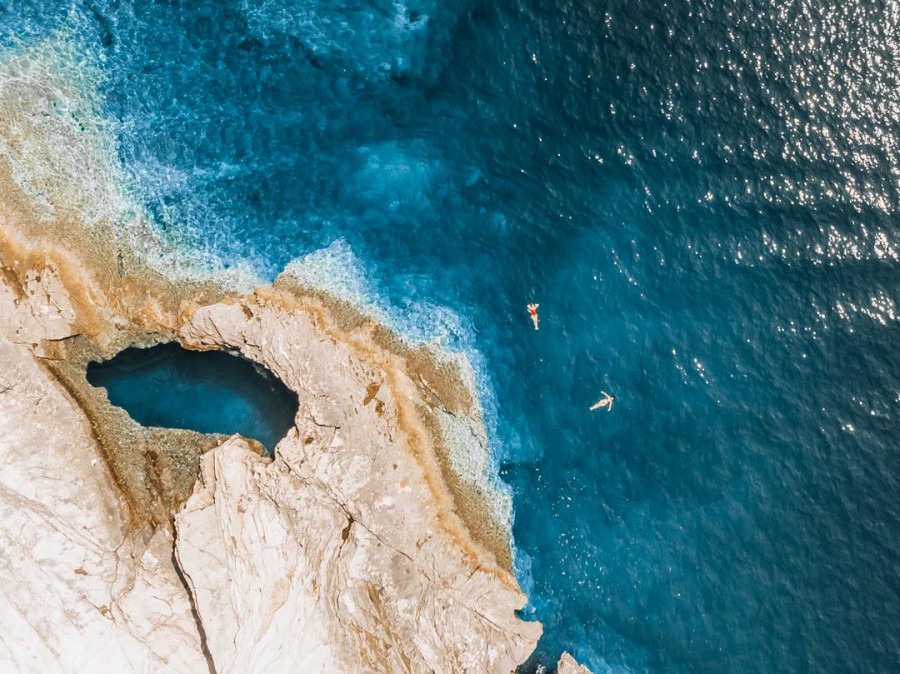
Why sea caves in Croatia should be on your travel list
Some of these caves can be considered barely discovered, as they are secluded enough not to be overly populated with tourists but interesting enough to be of constant interest to explore one-of-a-kind places.
Croatia's sea caves are a natural wonder that should not be missed. From their unique geology to stunning beauty, these caves offer an unforgettable experience for explorers and sailors of all ages and interests.
So, add Croatia's sea caves to your travel list and prepare for an adventure you won't forget!


